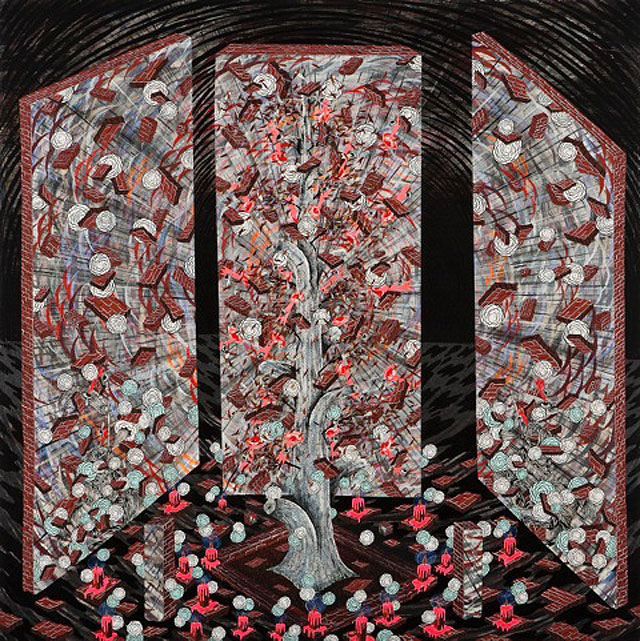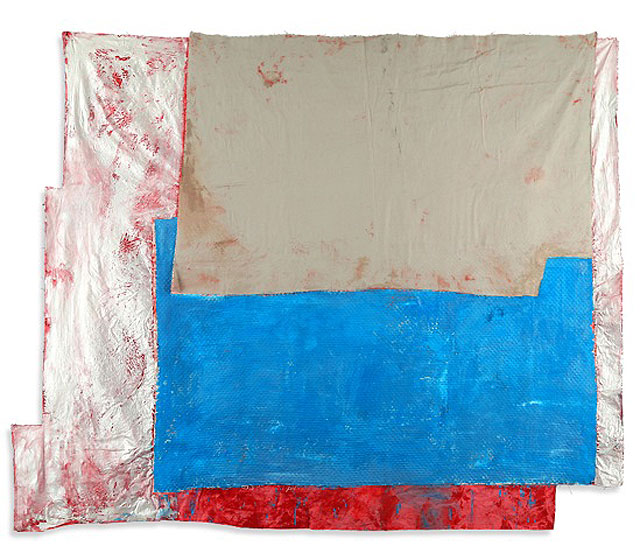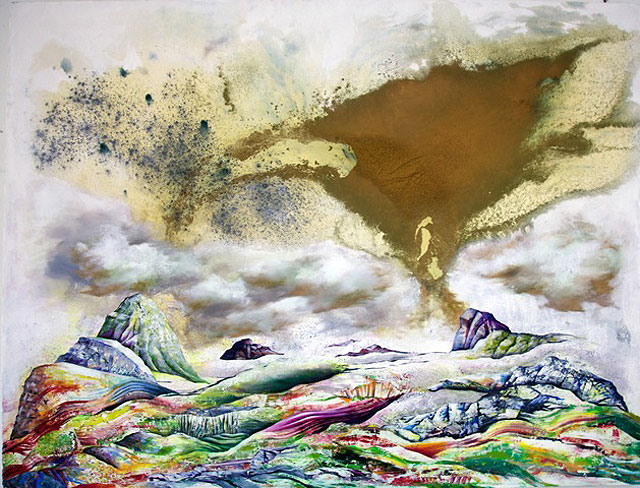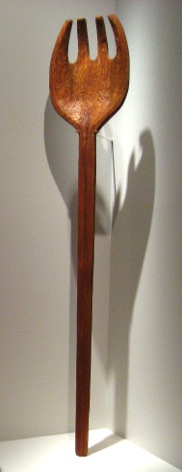It was a canary in a coal mine moment when Heather Marx and Steve Zavattero announced on August 1, 2012 that they were leaving 77 Geary in search of another location for their eponymous art gallery. (That announcement preceded a number of rent hikes and evictions at both 77 and 49 Geary, decentering the downtown art scene and raising questions about the future of commercial galleries in a city with a traditionally small collector base.)
I have to admit that Marx/Zavattero was one of my favorite downtown destinations. You never knew what you might encounter stepping over the gallery’s threshold, but it somehow always felt like the art was straining against the boundaries of the mid-sized main room, threatening to break through the walls and invade the corridors of your mind, if not the physical space.
A year later, after a dispiriting tour through the looking-glass world of local commercial real estate, the couple sent out a final notice on August 1, 2013 that the Marx/Zavattero gallery was no more.
But for Heather Marx, that was just the beginning of a journey that leads to Thursday, Oct. 2, 2014, when she opens Shift, her first show at The NWBLK. It would be hard for Shift to feel like it is straining against the boundaries of this particular location, which is a warehouse — a former municipal street sign storage space — that has been transformed by Creative Director Steven Miller into a swanky work slash exhibition space that specializes in high-end furniture and designer clothing. (I mean, this stuff is SERIOUS — sleek coffee tables made out of poured concrete that would probably fall through your creaky floor and that you know you don’t make enough money to even ask after the price. Well, if you’re me, that is. But, it’s cool. These objects look like mid-20th century modern married contemporary computer and had a design baby — handsome and clever, not cuddly.)
Into this environment of hard, hard edges, Marx is bringing her trademark humor, which celebrates quirk, surrealism and the violation of boundaries. Shift also launches a new art advisory business that arrives a little over two years after Marx and her husband realized their gallery was in for a big change — hence the title.

“When I came up with the name,” Marx says, “I was thinking ‘shift in material, form, color, light,’ all those classic words that you can use to describe objects. But it’s also about the shift in the way I am doing business and the way the art world works. A shift into combining multiple aesthetics and in ways of viewing and experiencing art.”
Because of the work she spied at The NWBLK, Marx concentrated on “artwork that had lots of layers and material innovations — things that are produced with a high level of process and craft.” Every artist in the show combines both an “insane concentration on detail” (see Andrew Schoultz) and a “mash-up collage sensibility” (see Arngunnur Yr). What the artists and designers have in common is the creation of unexpected juxtapositions, in both materials and subject matter.
Marx admits that The NWBLK is “catnip for a curator. Something about the spareness of the space felt very Bauhaus, very stark — a hard, cold, blank canvas. There was something ambitious about the place, which has the ambiance of industry — a concentration on work — to it.”
But it took over two years of hard work for Marx to get to where she is now. Closing down Marx/Zavattero was a long process that involved a lot of grieving, and a lot of thinking about what was ending and what happens next. Marx says, “Calling each of the artists and having long, drawn-out conversations — it was really just sad. It was the end of a family. A lot of these artists we worked with for 10-11 years and they became our very close friends and they still are, but it was just the end of something that we had created together that was wonderful.” She stresses that an art gallery is more than a business; it is a space where (not unlike a startup) a bunch of people come together to create a feeling, an idea and a community. In that sense, a gallery is a constantly evolving installation project, with an economic eco-system of artists, curators, framers, installers, writers, collectors and visitors.
“There were many ups and triumphs, but at the end of the day it became unsustainable.” After surviving what felt very much like a failure, Marx believes that the future of the “white cube” is of either very large spaces or very small ones, but the middle ground — the middle class — is disappearing. She’s not sure what the future holds for curators either, but knows that she has not been able to escape her passions for championing new voices in the arts, matching collectors with the objects she knows will make a difference in their lives and creating events and exhibitions. Shift marks a change in thinking and the beginning of a new business model that is still in development, one she hopes will stay open and flexible, while remaining focused on the value of living every day with art.
Marx says The NWBLK shows “things that are innovative and fun and fresh, different kinds of objects that you can put in your home and they’ll mean something. They’ll change the way you look and think when you are at home.” These objects are no different from the art that she represents.
“I think art is very animated,” Marx says. “Every piece of art that I live with has a story, and a table can have one, too, or a beautifully made day bed. Living with ‘animated’ objects expands your experience and makes you a better person. I think it makes you more sensitive to other people and the act of creation and what that artist was trying to say and how it affects you. It just makes you think more. Contemplating anything that has value or importance to you is going to make you a better person.”
Shift runs through December 15, 2014. The opening reception is 6-9pm, October 2, 2014. For more information, visit hmxaa.com.


